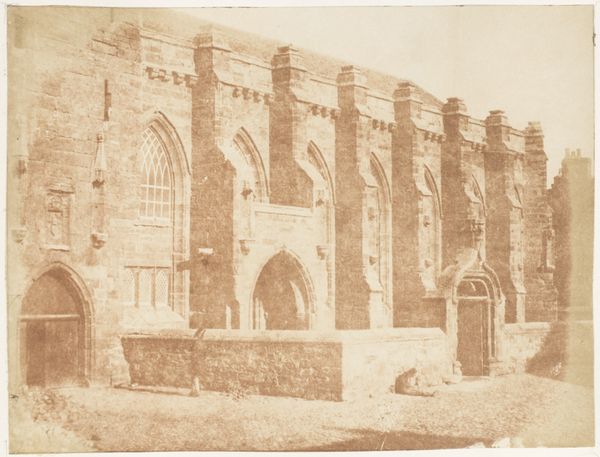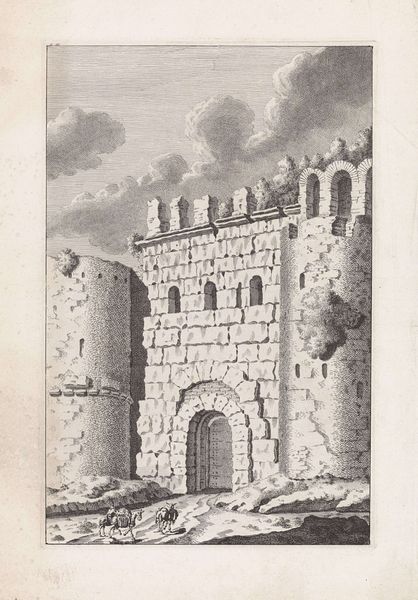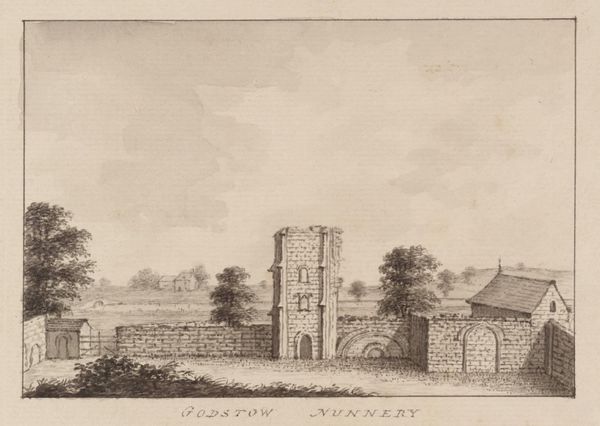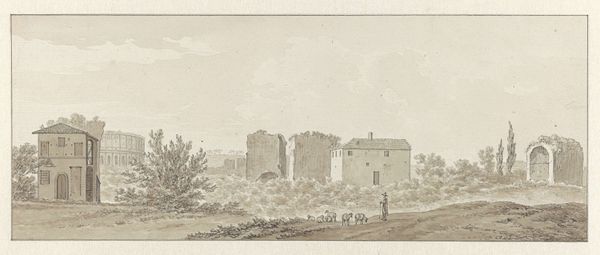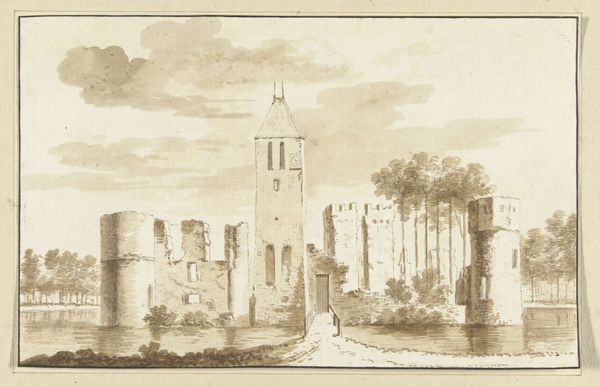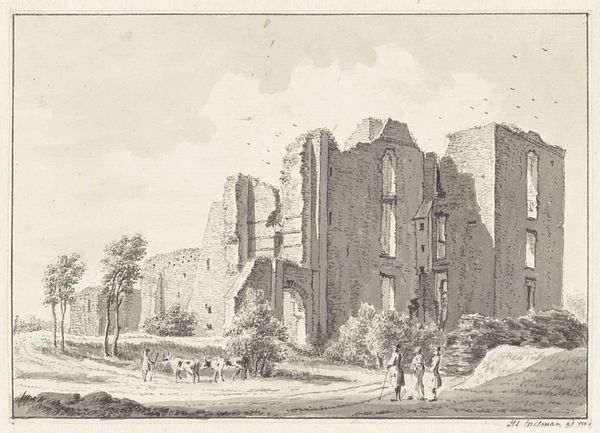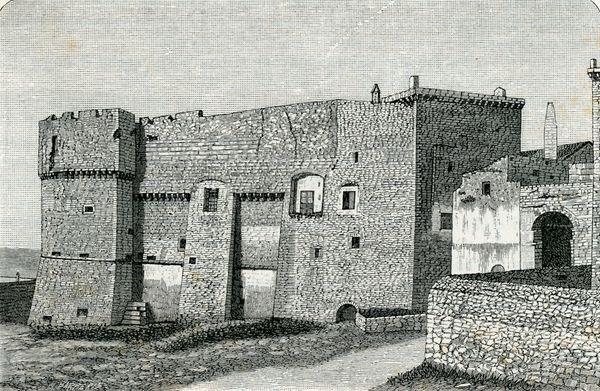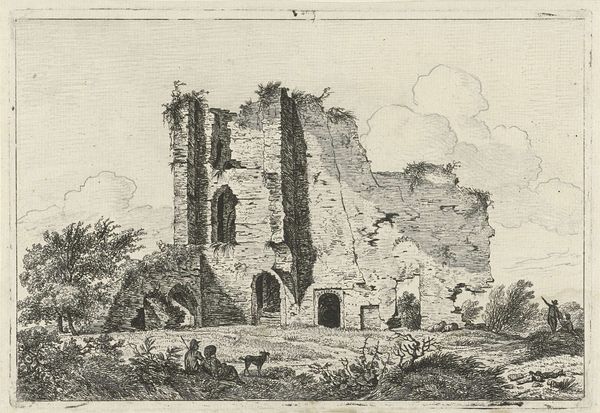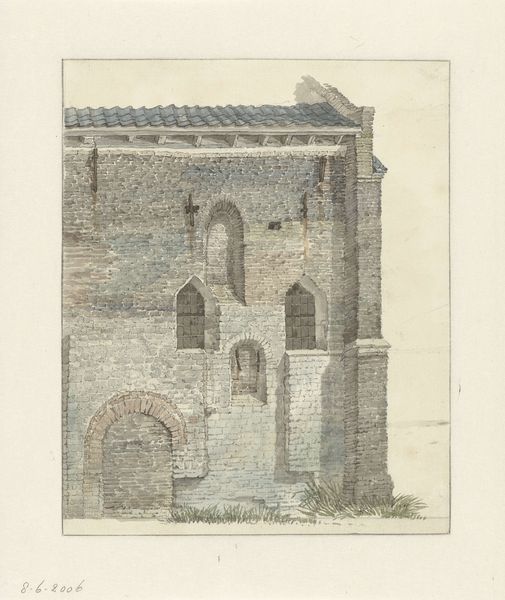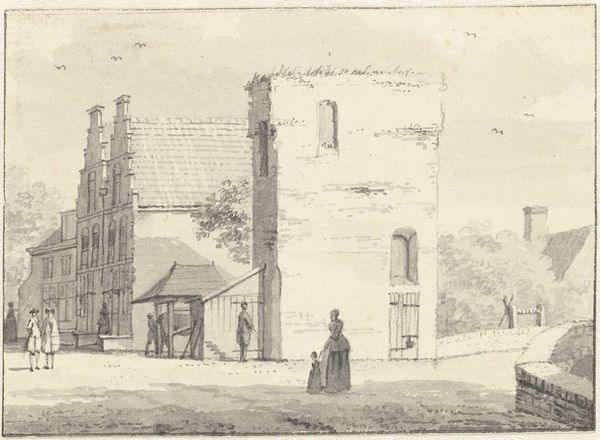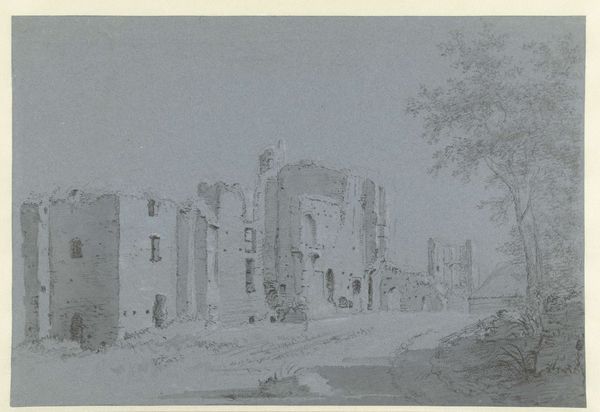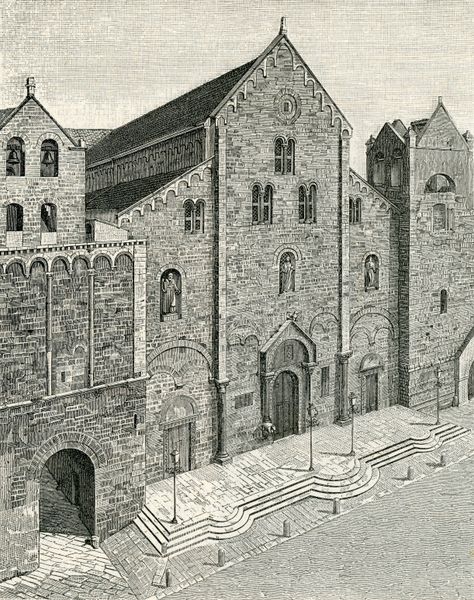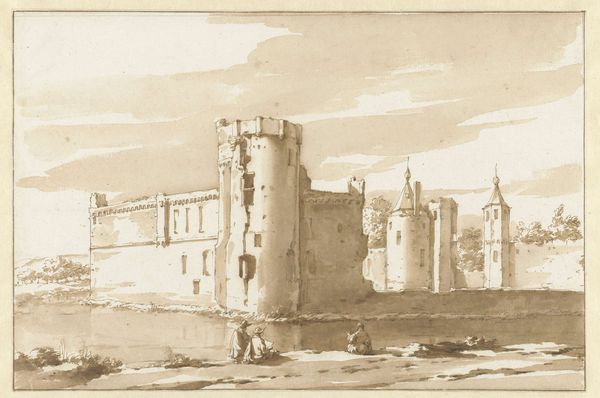
drawing, print, ink, engraving, architecture
#
drawing
#
medieval
# print
#
landscape
#
ink
#
geometric
#
line
#
engraving
#
watercolor
#
architecture
Copyright: Public domain
This print of Castel Del Monte, was made by Giuseppe Barberis in the late 19th or early 20th century. It is a process-based piece, created through the intricate technique of engraving. Consider the way the work's graphic materiality shapes its appearance, the cross-hatching and linear marks create depth, texture and form in the building. The engraving process, traditionally a skilled handcraft, imbues the artwork with cultural significance, connecting it to the history of printmaking as a mode of communication and documentation. Barberis engaged with established artistic traditions, drawing and etching, though here he used it for the purpose of architectural record. The work involved in creating the fine detail, the lines, and tonality, reflect the labor-intensive nature of printmaking, at a time when new printing technologies were emerging. Considering the materials, processes, and social context in this way, we can see how this print challenges traditional distinctions between fine art and craft.
Comments
No comments
Be the first to comment and join the conversation on the ultimate creative platform.
